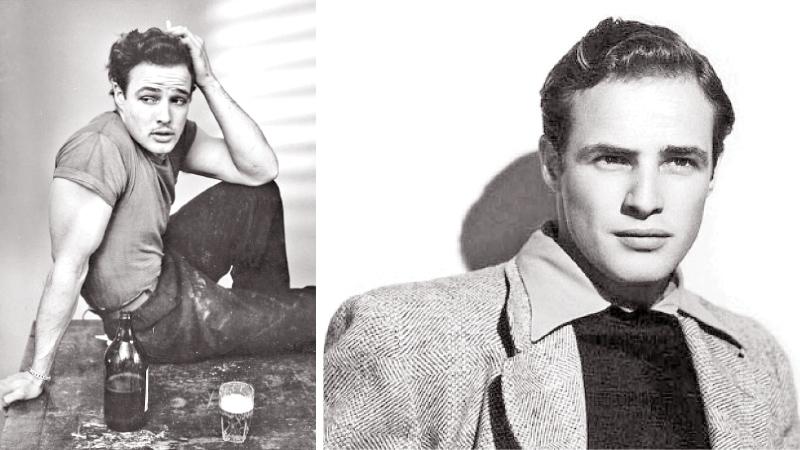
The legendary screen presence, Marlon Brando performed for more than 50 years and is famous for such films as A Streetcar Named Desire and The Godfather.
Marlon Brando was born April 3, 1924, in Omaha, Nebraska. After early promise in the 1940s and ‘50s, including a legendary performance in the film version of A Streetcar Named Desire, Brando’s film career had more downs than ups until his starring role in The Godfather. Later, he received huge salaries for small parts. He became known for self-indulgence but was always respected for his fine work.
Early Broadway roles
Actor Marlon Brando was born on April 3, 1924, in Omaha, Nebraska. Brando grew up in Illinois, and after expulsion from a military academy, dug ditches until his father offered to finance his education. Brando moved to New York to study with acting coach Stella Adler and at Lee Strasberg’s Actors’ Studio. Adler has often been credited as the principal inspiration in Brando’s early career, and with exposing the actor to great works of literature, music and theatre.
While at the Actors’ Studio, Brando adopted the ‘method approach,’ which emphasises characters’ motivations for actions. He made his Broadway debut in John Van Druten’s sentimental I Remember Mama (1944). New York theatre critics voted him ‘Broadway’s Most Promising Actor’ for his performance in Truckline Cafe (1946). In 1947, he played his greatest stage role, Stanley Kowalski - the brute who rapes his sister-in-law, the fragile Blanche du Bois in Tennessee Williams’ A Streetcar Named Desire.
Hollywood bad boy
Hollywood beckoned to Brando, and he made his motion picture debut as a paraplegic World War II veteran in The Men (1950). Although he did not cooperate with the Hollywood publicity machine, he went on to play Kowalski in the 1951 film version of A Streetcar Named Desire, a popular and critical success that earned him four Academy Awards.
Brando’s next movie, Viva Zapata! (1952), with a script by John Steinbeck, traces Emiliano Zapata’s rise from peasant to revolutionary. Brando followed that with Julius Caesar and then The Wild One (1954), in which he played a motorcycle-gang leader in all his leather-jacketed glory. Next came his Academy Award-winning role as a longshoreman fighting the system in On the Waterfront, a hard-hitting look at New York City’s labour unions.
During the rest of the decade, Brando’s screen roles ranged from Napoleon Bonaparte in Désirée (1954), to Sky Masterson in 1955’s Guys and Dolls, in which he sang and danced, to a Nazi soldier in The Young Lions (1958). From 1955 to 1958, movie exhibitors voted him one of the top 10 box-office draws in the nation.
During the 1960s, however, his career had more downs than ups, especially after the MGM studio’s disastrous 1962 remake of Mutiny on the Bounty, which failed to recoup even half of its enormous budget. Brando portrayed Fletcher Christian, Clark Gable’s role in the 1935 original. Brando’s excessive self-indulgence reached a pinnacle during the filming of this movie. He was criticised for his on-set tantrums and for trying to alter the script. Off the set, he had numerous affairs, ate too much, and distanced himself from the cast and crew. His contract for making the movie included $5,000 for every day the film went over its original schedule. He made $1.25 million when all was said and done.
The Godfather
Brando’s career was reborn in 1972 with his depiction of Mafia chieftain Don Corleone in Francis Ford Coppola’s The Godfather, a role for which he received the Academy Award for the Best Actor. He turned down the Oscar, however, in protest of Hollywood’s treatment of Native Americans. Brando himself did not appear at the awards ceremony . Instead, he sent a Native American Apache named Sacheen Littlefeather (who was later determined to be an actress portraying a Native American) to decline the award on his behalf.
Later roles
Brando proceeded the following year to the highly controversial yet highly acclaimed Last Tango in Paris, which was rated X. Since then, Brando has received huge salaries for playing small parts in such movies as Superman (1978) and Apocalypse Now (1979). Nominated for an Academy Award for Best Supporting Actor for A Dry White Season in 1989, Brando also appeared in the comedy The Freshman with Matthew Broderick.
In 1995, Brando co-starred in Don Juan DeMarco with Johnny Depp. In early 1996, Brando co-starred in the poorly received The Island of Dr. Moreau. Entertainment Weekly reported that the actor was using an earpiece to remember his lines. His costar in the film, David Thewlis, told the magazine that Brando nonetheless impressed him. “When he walks into a room,” Thewlis said , “you know he’s around.”
In 2001, Brando starred as an aging jewel thief in pursuit of one last payoff in The Score, also starring Robert De Niro, Edward Norton, and Angela Bassett.
Death and Legacy
Brando’s years of self-indulgence are visible, as he weighed well over 300 pounds in the mid-1990s. The actor died of pulmonary fibrosis in a Los Angeles hospital in 2004 at the age of 80. But to judge Brando by his appearance and dismiss his work because of his later, less significant acting jobs, however, would be a mistake. His performance in A Streetcar Named Desire brought audiences to their knees, and his range of roles is a testament to his capability to explore many aspects of the human psyche.
